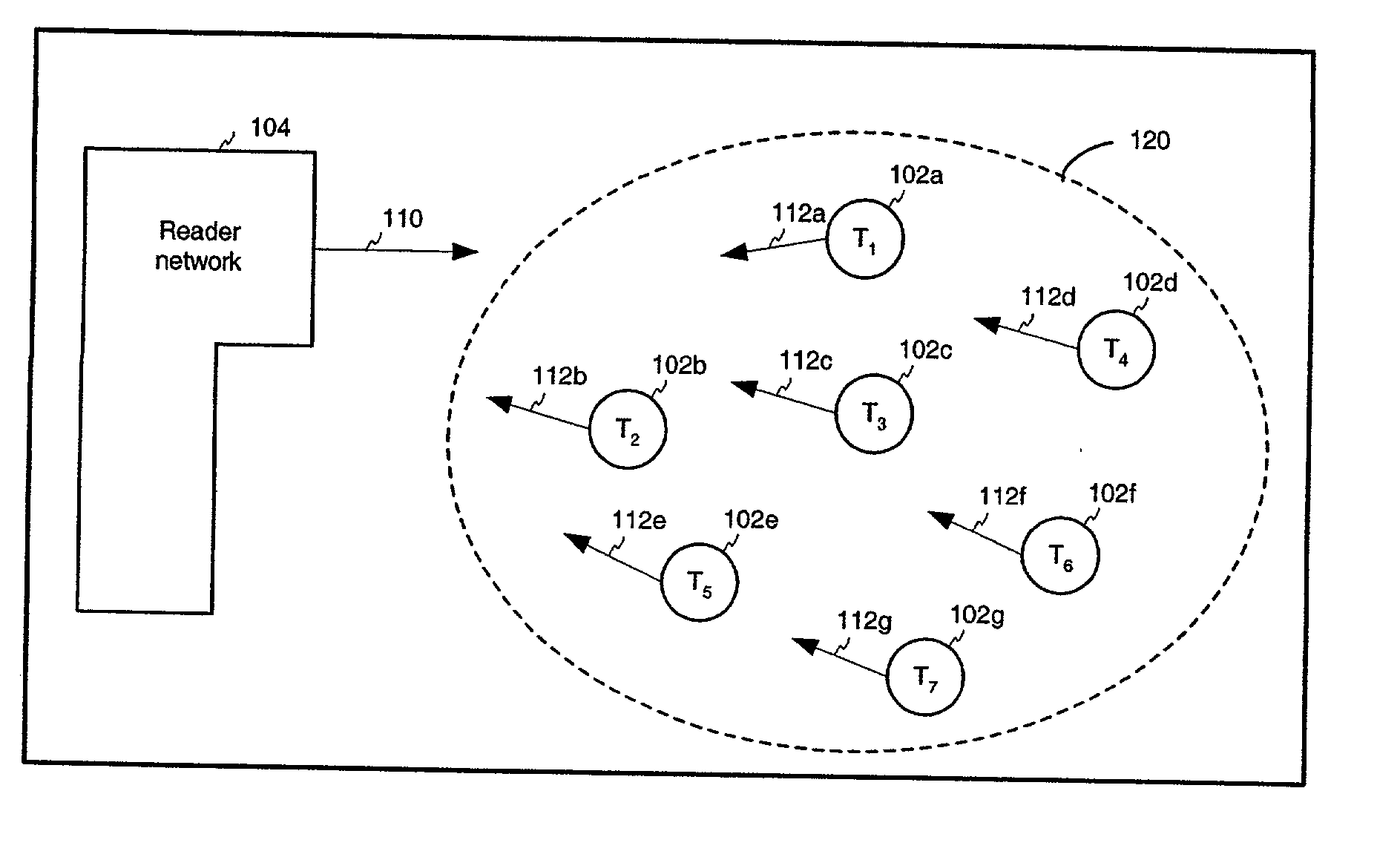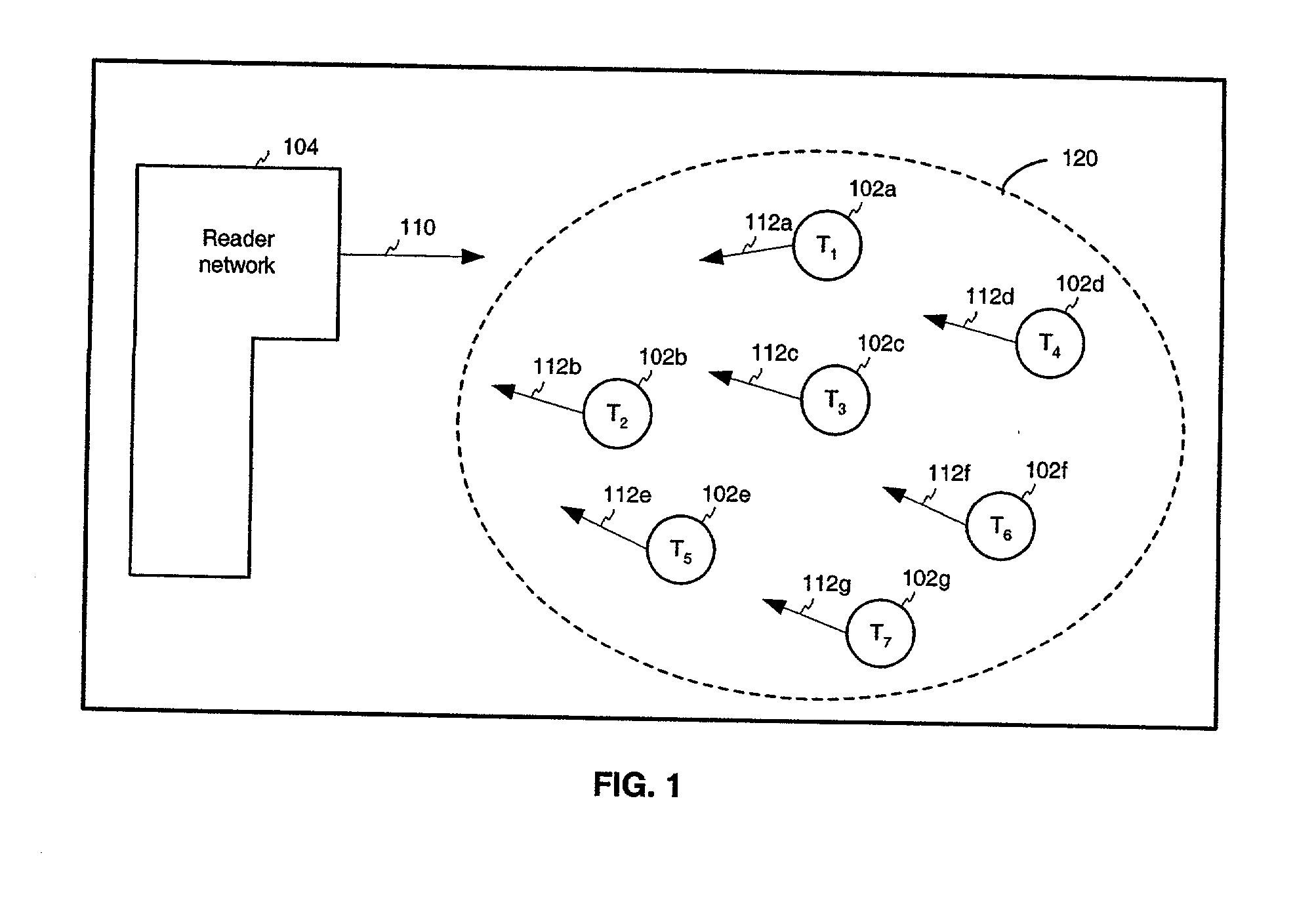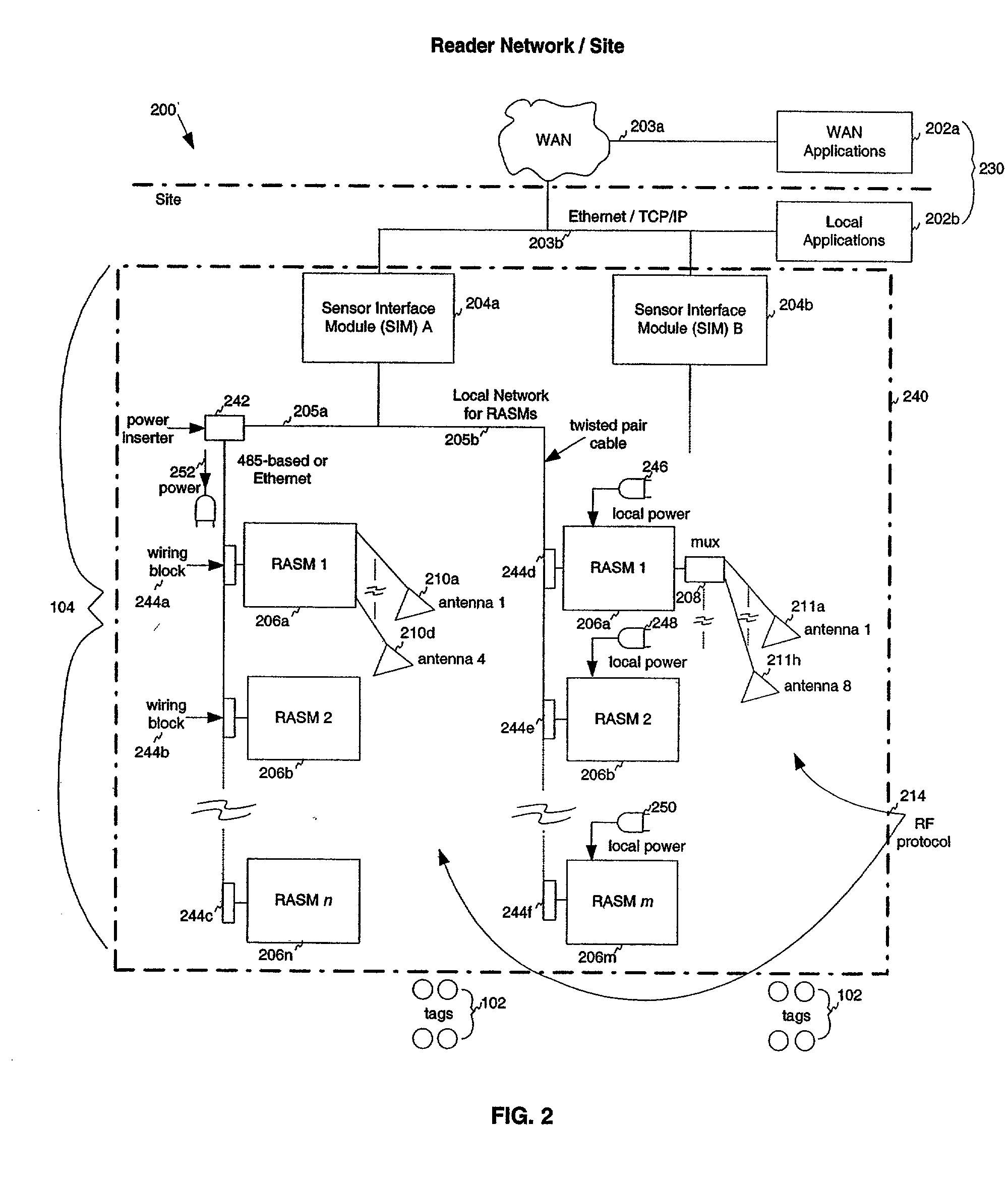Identification tag utilizing charge pumps for voltage supply generation and data recovery
a technology of identification tags and charge pumps, applied in the direction of near-field systems using receivers, instruments, burglar alarm mechanical actuation, etc., can solve the problems of large power consumption of available tags, inefficient power schemes of tag power schemes, and large cost of current available tags
- Summary
- Abstract
- Description
- Claims
- Application Information
AI Technical Summary
Problems solved by technology
Method used
Image
Examples
Embodiment Construction
[0315] FIG. 17A shows a flowchart illustrating operation of a tag 102 in superposition state 1210. As shown in FIG. 17A, operation begins with step 1702. In step 1702, tag 102 is in dormant state 1202.
[0316] In step 1704, tag 102 receives a master reset signal from reader network 104. Upon receipt of this signal, tag 102 transitions from dormant state 1202 to calibration state 1204.
[0317] In step 1706, tag 102 is synchronized with reader network 104. Accordingly, oscillator calibration and data calibration procedures occur, that are further described below. After tag 102 becomes synchronized with reader network 104, it enters command state 1206.
[0318] In step 1708, tag 102 receives a command from reader network 104 that causes tag 102 to transition to superposition state 1210. As described above, the command may be a one or more bits, such as a single bit logical "1" symbol 402.
[0319] In step 1710, tag 102 designates an initial bit of its identification number for transmission as a ...
PUM
 Login to View More
Login to View More Abstract
Description
Claims
Application Information
 Login to View More
Login to View More - R&D
- Intellectual Property
- Life Sciences
- Materials
- Tech Scout
- Unparalleled Data Quality
- Higher Quality Content
- 60% Fewer Hallucinations
Browse by: Latest US Patents, China's latest patents, Technical Efficacy Thesaurus, Application Domain, Technology Topic, Popular Technical Reports.
© 2025 PatSnap. All rights reserved.Legal|Privacy policy|Modern Slavery Act Transparency Statement|Sitemap|About US| Contact US: help@patsnap.com



